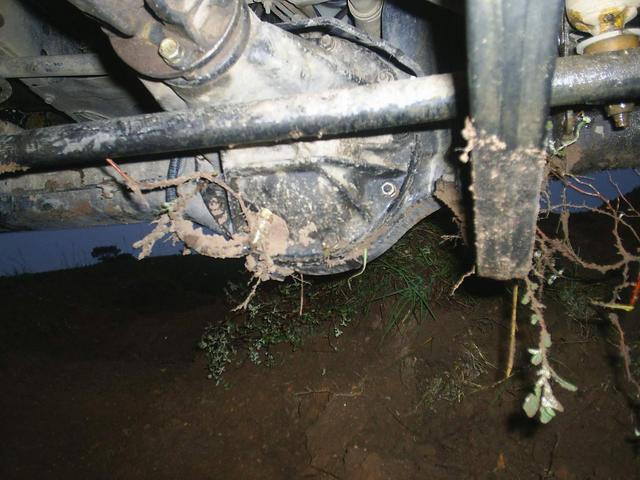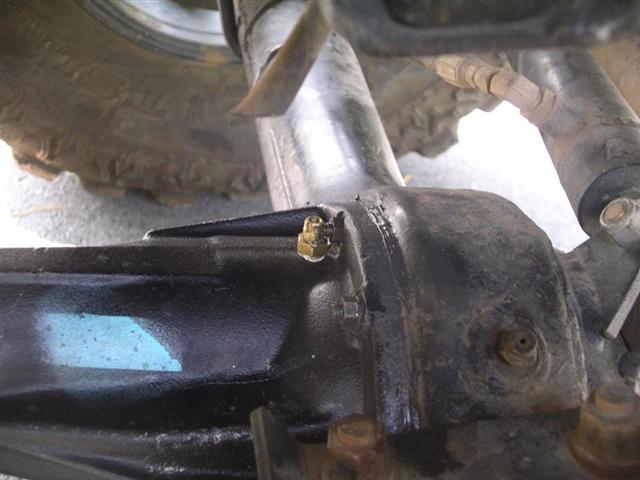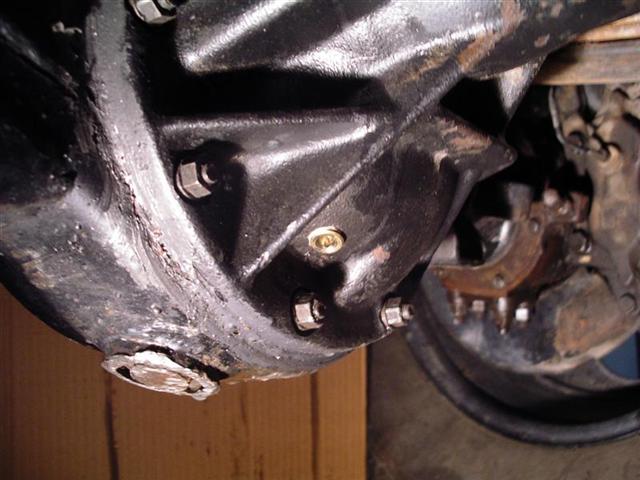ARB Air Locker Troubleshoot FAQ Gear Oil Coming From Solenoid: 3 Basic Causes: 1. Clogged axle breather
vent: 2. Overfilled differential: 3. O-ring failure: Other Possible Scenarios: Case Study: Approximately
2 weeks later, the customer was having the same symptoms again, small
amounts of gear lube leaking from the top of the solenoid (discharge
vent) as it sat overnight, regardless of whether or not the locker was
operated recently. At this point we decided to go ahead and pull the
3rd member and inspect the o-rings and seal housing for any obvious
problems. Upon disassembly the only thing we could see was looked to be
a small "manufacturing" mark on the cylinder cap of the Air Locker...
however it was minor enough that we felt comfortable reinstalling the
locker with new O-rings. The locker was bench tested using 110 psi (far
more than the operational pressure of the locker), it tested above and
beyond ARB's specifications. We reinstalled the 3rd member, buttoned
everything up and cleaned out the air lines, once again using
compressed air. The locker functioned as planned, we probably cycled it
a hundred time over the course of a day, each time it worked
flawlessly. Problem solved? Another
month goes by and I get a call from the customer, I had actually called
him the day before just to double check that everything was holding up
as planned... bad news, the solenoid was "drizzling" lube once again,
enough to notice and cause lube to be "sprayed" after disengaging the
locker. I place a call to the tech gurus at ARB, hoping they could
think of something that we had missed. We covered the diff breathers,
o-rings, etc... the only thing he could thing of is that we didn't get
the lube completely cleaned out of the locker assembly. His analogy was
"oil on a table", you can blow it with air all you want, but its just
going to coat the entire table. He recommended using some brake cleaner
to clean all of the residual air out of the lines. This seems
plausible, we had no way of knowing how much lube was inside the piston
assembly of the air locker, not to mention all the residual lube inside
the plastic line that didn't get removed by the compressed air method
(using the compressor). Our next
step is to clear the lines one more time... this time using some brake
cleaner and higher pressure to really clear everything out. However if
the amount of fluid leaking stays consistent between now and the time
we get the customers truck in our hand... this is likely not the issue.
If that is determined, we will once again pull the 3rd member, this
time paying VERY close attention to the minor "scars" we noted on the
cylinder cap, I have another cap ready to go if that turns out to be
the case. Stay tuned, if you have any suggestions/ideas let me know!! To date
this is the ONLY locker I have dealt with that has experienced issues
as such, we have literally sold and installed hundreds of lockers over
the past 10+ years, and while we have had some isolated issues with
o-rings, nothing like this case. While o-rings have failed in the past,
I am convinced this unit has some issue besides the o-rings. All things
considered I'm still 100% sold on the Air
Lockers! UPDATE: TROUBLESHOOTING Air Line Supply Disruptions: 3 Basic Air Supply Disruptions: 1. Compressor
fails to
switch on 2. Compressor
fails to
switch off 3. Lockers
fail to engage
when button is pressed on Common Solutions: 1.a &
3.a: 1.b:
1.c:
2.a:
2.b:
3.b:
3.c:
3.d:
ARB Compressor Fault Diagnosis Procedure: COMING SOON! (email if needed) Install Notes: Time and time again you hear somebody comment against the ARB Air Locker based on their experiences their 'buddy' had with one or some similar scenario. There is no mistaking that the ARB Air Locker does take special effort during the install however its of our opinion that these special install techniques don't detract from the units reliability or longevity, rather they just need to be done right for years of trouble free performance with your Air Locker. Cruiser Outfitters has been selling and installing ARB Air Lockers for over 15 years, literally hundreds of installs in various Toyota applications. We don't offer non-Toyota installs, we've become intimately familiar with all aspects of the Toyota application installs and we've chosen to limit ourselves there. Be sure your chosen installers has the knowledge to properly install an ARB Air Locker system, including correctly routing and tapping the differential housing for the air supply line, installing the bulkhead fitting kit properly and bench testing the unit to pressure before installing it back in the axle or sending it out for customer install. We bench test all of our built differentials at 100 psi for a minimum of on hour, under several different conditions. If any leak down is noted we address the o-rings or related air supply components before you get the differential in your axle, at which point its too late for a quick fix. Install Errors: Some of the install pictures that have been sent our way or we've had come into the shop over the years. Again we can't stress enough that while the ARB Air Lockers are not any more difficult to install than any standard carrier, there are a few special considerations that the installer needs to be familiar with such as where to drill and tap for the air supply line, this includes knowing which side of the axle housing to drill it on.
Links: Information contributed by: Cruiser Outfitters ARB Air
Locker Service
Manual *See something missing, wrong, or incomplete? Please let us know! Disclaimer: Cruiser Outfitters, cruiseroutfitters.com, its owners, contributors, employees and agents will not be held liable for damages and or injury under any circumstances for information presented accordingly. Furthermore, said agents reserve the right to modify/remove/edit all information accordingly. |
Drive Train I Suspension I Performance I Exterior Parts I Interior Parts I Accessories I Advance Adapters I Toyota OEM Parts
Used Parts I Custom Fabrication I Line Card I Land Use I Specials
Home I Customer Comments I About Us I Contact Us / Order I Photo Gallery
© 2003 - 2011 Cruiser Outfitters I Website Built by College Internet Solutions & Maintained by Cruiser Outfitters


